Evasion of endoplasmic reticulum surveillance makes Wsc1p an obligate substrate of Golgi quality control
- PMID: 20130083
- PMCID: PMC2847520
- DOI: 10.1091/mbc.e09-10-0910
Evasion of endoplasmic reticulum surveillance makes Wsc1p an obligate substrate of Golgi quality control
Abstract
In the endoplasmic reticulum (ER), most newly synthesized proteins are retained by quality control mechanisms until folded. Misfolded molecules are sorted to ER-associated degradation (ERAD) pathways for disposal. Reports of mutant proteins degraded in the vacuole/lysosome suggested an independent Golgi-based mechanism also at work. Although little is understood of the post-ER pathway, the growing number of variants using it suggests a major role in quality control. Why seemingly redundant mechanisms in sequential compartments are needed is unclear. To understand their physiological relationship, the identification of endogenous pathway-specific substrates is a prerequisite. With ERAD substrates already well characterized, the discovery of Wsc1p as an obligate substrate of Golgi quality control enabled detailed cross-pathway analyses for the first time. By analyzing a panel of engineered substrates, the data show that the surveillance mode is determined by each polypeptide's intrinsic design. Although most secretory pathway proteins can display ERAD determinants when misfolded, the lack thereof shields Wsc1p from inspection by ER surveillance. Additionally, a powerful ER export signal mediates transport whether the luminal domain is folded or not. By evading ERAD through these passive and active mechanisms, Wsc1p is fully dependent on the post-ER system for its quality control.
Figures
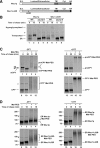
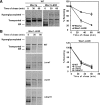
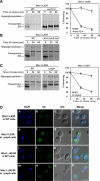

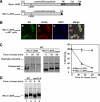

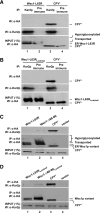
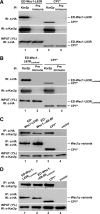
Similar articles
-
Misfolded proteins traffic from the endoplasmic reticulum (ER) due to ER export signals.Mol Biol Cell. 2007 Feb;18(2):455-63. doi: 10.1091/mbc.e06-08-0696. Epub 2006 Nov 15. Mol Biol Cell. 2007. PMID: 17108324 Free PMC article.
-
Misfolded proteins are sorted by a sequential checkpoint mechanism of ER quality control.J Cell Biol. 2004 Apr;165(1):41-52. doi: 10.1083/jcb.200309132. J Cell Biol. 2004. PMID: 15078901 Free PMC article.
-
Interplay of substrate retention and export signals in endoplasmic reticulum quality control.PLoS One. 2010 Nov 24;5(11):e15532. doi: 10.1371/journal.pone.0015532. PLoS One. 2010. PMID: 21151492 Free PMC article.
-
ER-associated degradation in protein quality control and cellular regulation.Curr Opin Cell Biol. 2002 Aug;14(4):476-82. doi: 10.1016/s0955-0674(02)00358-7. Curr Opin Cell Biol. 2002. PMID: 12383799 Review.
-
Proteasomal and lysosomal clearance of faulty secretory proteins: ER-associated degradation (ERAD) and ER-to-lysosome-associated degradation (ERLAD) pathways.Crit Rev Biochem Mol Biol. 2019 Apr;54(2):153-163. doi: 10.1080/10409238.2019.1610351. Epub 2019 May 14. Crit Rev Biochem Mol Biol. 2019. PMID: 31084437 Review.
Cited by
-
The unfolded protein response supports cellular robustness as a broad-spectrum compensatory pathway.Proc Natl Acad Sci U S A. 2011 Dec 20;108(51):20597-602. doi: 10.1073/pnas.1117184109. Epub 2011 Dec 5. Proc Natl Acad Sci U S A. 2011. PMID: 22143797 Free PMC article.
-
Golgi organization is regulated by proteasomal degradation.Nat Commun. 2020 Jan 21;11(1):409. doi: 10.1038/s41467-019-14038-9. Nat Commun. 2020. PMID: 31964869 Free PMC article.
-
NCLs and ER: A stressful relationship.Biochim Biophys Acta Mol Basis Dis. 2017 Jun;1863(6):1273-1281. doi: 10.1016/j.bbadis.2017.04.003. Epub 2017 Apr 6. Biochim Biophys Acta Mol Basis Dis. 2017. PMID: 28390949 Free PMC article. Review.
-
Quality and quantity control at the endoplasmic reticulum.Curr Opin Cell Biol. 2010 Aug;22(4):437-46. doi: 10.1016/j.ceb.2010.05.005. Epub 2010 Jun 1. Curr Opin Cell Biol. 2010. PMID: 20570125 Free PMC article. Review.
-
Transmembrane domain quality control systems operate at the endoplasmic reticulum and Golgi apparatus.PLoS One. 2017 Apr 6;12(4):e0173924. doi: 10.1371/journal.pone.0173924. eCollection 2017. PLoS One. 2017. PMID: 28384259 Free PMC article.
References
Publication types
MeSH terms
Substances
LinkOut - more resources
Full Text Sources
Molecular Biology Databases

